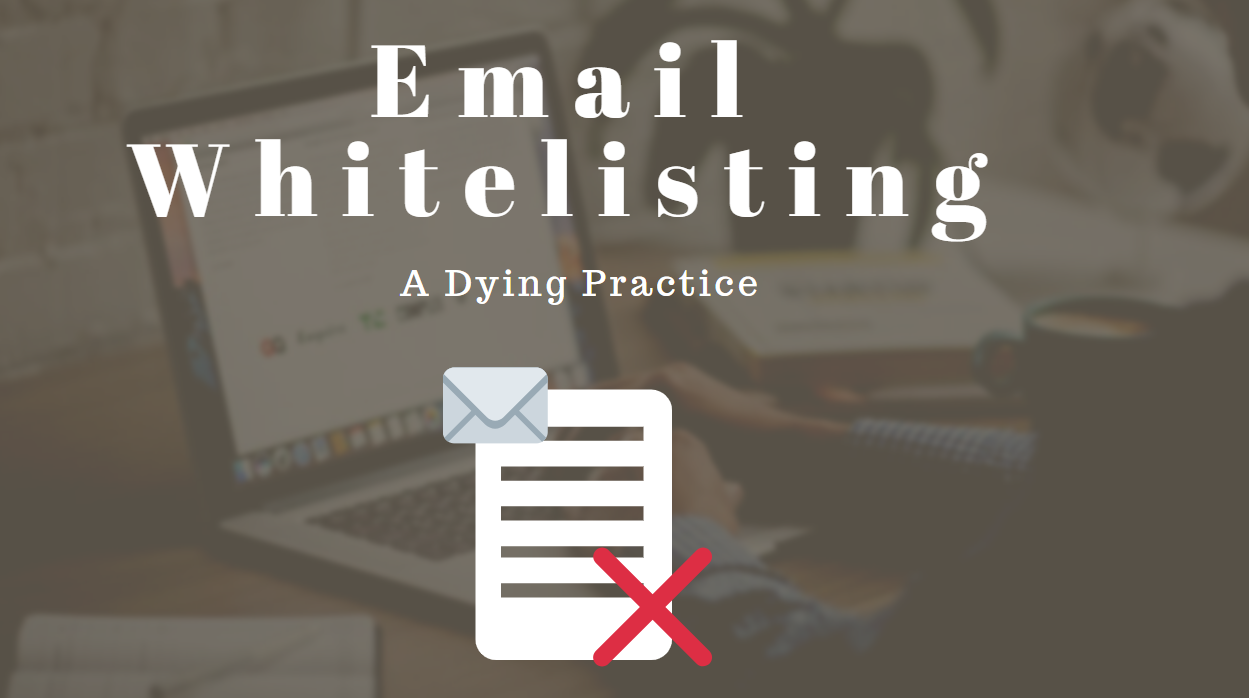“While the practice of email whitelisting has been used for decades, it has lost significant importance over the years.”
So what is this coveted “email whitelist” that you’ve probably heard floating around the virtual halls of the email industry? To understand email whitelisting and its current importance in the industry, let’s discuss a more common term that you’re certainly more familiar with, a blacklist.
No matter the context, you don’t want to find yourself anywhere associated with the shady inhabitants of a blacklist. If you’ve made it to any type of blacklist, you have been noted as having a less than suitable reputation among your counterparts. As you’d likely assume, the opposite of a blacklist is a whitelist.
What is whitelisting an email?
So what is the meaning of email whitelisting? In the world of email, whitelisting is a way for mailbox providers, i.e. Gmail, to allocate special privileges to certain trusted senders or domains. In other words, if you have a great email reputation, you are rewarded with better deliverability. But in an era of increasingly intelligent spam filters and content blockers, how important is the seemingly archaic email whitelist in today’s world?
There are two primary types of email whitelisting in today’s email industry. First, there is whitelisting that is done by an email recipient, this is the process of whitelisting an email address. Lets say there is an email address that is wrongfully being blocked as spam in the recipients incoming mail, that recipient can manually whitelist the address through their mailbox provider to ensure safe delivery of those emails to the inbox.
The second type, and the type we are discussing today, is email whitelisting done by high volume email senders. Previously, a bulk email sender might have enlisted the help of a third party email whitelist service who would perform an audit on their IP, verify the sender’s good reputation, and sign them up for various whitelists. From there, the company would be registered with mailbox providers as having a good sender reputation, which would improve their deliverability. While the practice of email whitelisting has been used for decades, it has lost significant importance over the years. With the emergence of smart technology from big mailbox providers, there is no longer a need for old school email whitelists.
Email filters and spam traps have grown to be incredibly intelligent. Machine learning paired with highly adaptive algorithms are much harder to get past – unfortunately, even for legitimate senders. Big mailbox providers no longer jump at the idea of a manually created whitelist, when their algorithms can do more “reliable” work at a much faster rate. Sure, there still may be a whitelist out there that can help verify your good reputation, but the process of proving and building that reputation is quickly changing.
Despite any changes to whitelisting practices, email senders still want the same result: improved email deliverability. Only now, the process of getting there is much more intricate.
So what does this mean for you as a sender and how do you improve your email deliverability without whitelists?
How to whitelist an email
Email whitelisting isn’t what it once was. The days of an email sender jumping on a whitelist and boosting their deliverability are in the past. Instead, for a sender to boost their deliverability, they must focus on their sender reputation. Building this reputation with mailbox providers takes time and, among other intricacies, demands adherence to three major guidelines:
Actively avoiding any connection to spam or related practices and blacklists
First, mailbox providers will immediately look at the history of your IP address, looking for feedback your emails have received. Do you have numerous complaints attached to your IP address? Have you been flagged as email spam? Are your email bounce rates high? Are you on an email blacklist? These are the first and most fundamental checks that will dictate your overall deliverability. Poor results means poor deliverability – a direct correlation.
Only sending high quality email to people who want to receive them (i.e. opt-in lists)
Next, mailbox providers will look at the quality of the content in your message to see if it looks professionally designed. Were your emails put together in a way that meets a basic quality standard? Are recipients engaging well with your email design in a positive manner? If not, your deliverability will suffer.
Actively monitoring and cleaning email lists
Assuming your email is going to people who want to receive the mail, Cleaning your email lists is vital to email deliverability. Email list hygiene is important, you should regularly clean email lists of recipients who no longer want newsletters or messages. Keeping close track of soft and hard bounces and complaints will give you a good idea of who to remove first. The less negative feedback, the better your reputation will be in the long run. At the end of the day, this will help you increase your deliverability and overall engagement.
No matter your purpose in sending email, your sender reputation will go a long way in determining the deliverability of your email.
Making the Most of Email Deliverability
While following the three important guidelines above can help with deliverability, we have yet to even scratch the surface. It can be a lot to understand. That’s where email service providers (ESPs) come in. A good ESP will provide you with all of the performance metrics and email best practices you need to maximize your deliverability. Have you ever considered SPF, DKIM and DMARC authentication? Have you ever heard of IP warming? Is your HTML formatted properly? These are just a few major factors of deliverability that an ESP can help optimize. To get a better understanding of the big picture and learn more about these topics, read our comprehensive email deliverability guide.
Read More About Email Deliverability:
Increase Deliverability by Separating Mail Streams








